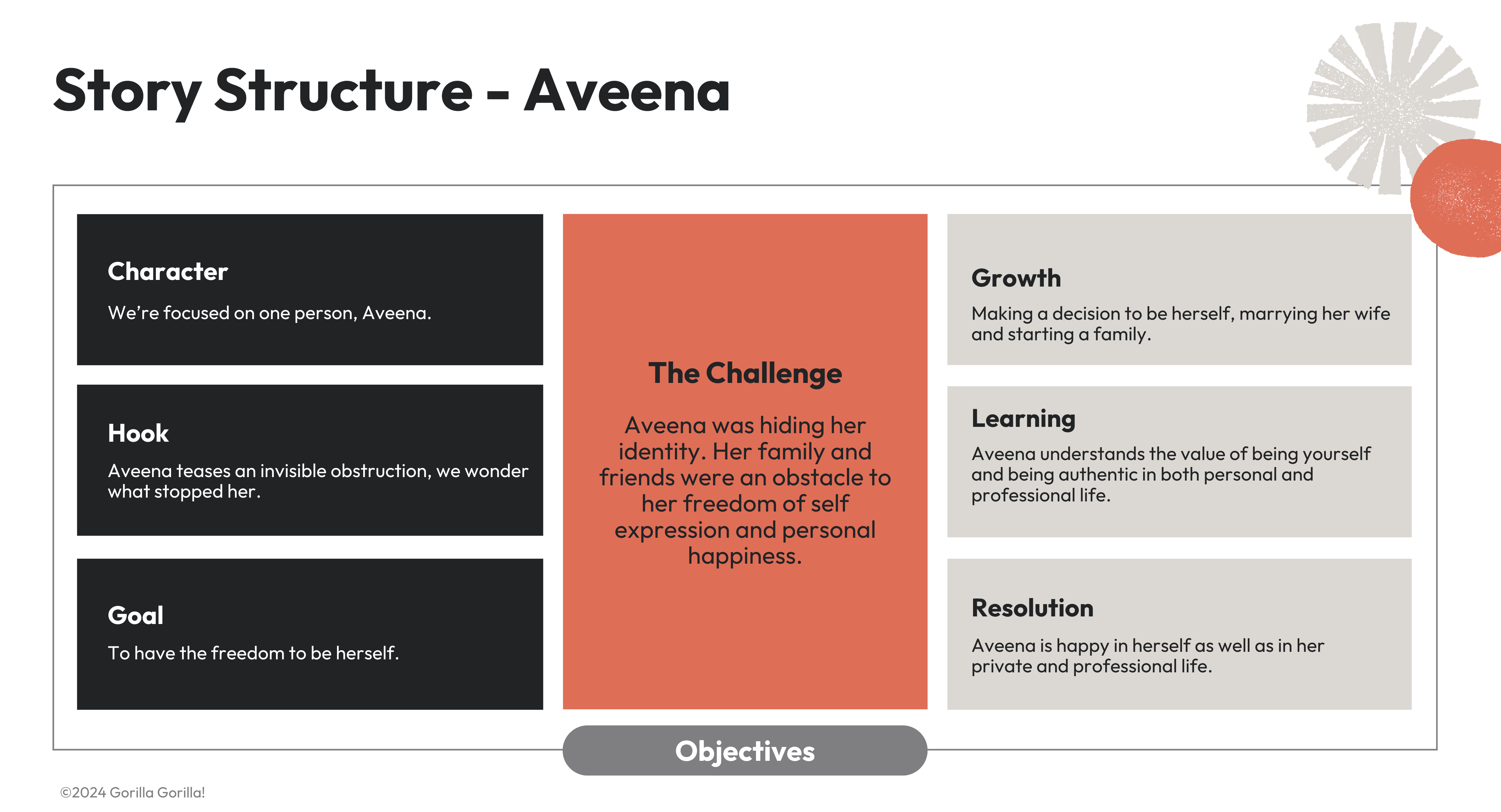Why do we need story?
Neuroscience tells us that humans are hard wired to remember stories better than facts. Multiple studies have also shown that stories consistently outperform factual narratives for encouraging action-taking in all audiences.
So, when we want to distil and communicate information effectively, when we want to persuade and move audiences to action, we need emotion, we need story.
However, what we see is that an understanding of how story works is often not effectively applied to both the story discovery process as well as the filmmaking process.
Real-Life Impact: Aveena’s Story
As an example of the difference that story structure can make, see below how we brought to life Aveena’s journey at Amazon as she looked to balance personal authenticity with family expectations. Using story structure, we were able to land a lot of information and a powerful emotional punch in a little over 1 minute…
Amazon Ads - Pride: Aveena
A simple yet powerful story framework
There are seven key elements that you need to look for when finding and telling a good story. We’ve mapped these out below using Aveena as an example…

4 key things to focus on
When looking to identify or tell a good story, we recommend focusing on these 4 key elements in particular…
- Start with a Challenge: At the heart of any engaging story is a challenge – a problem that needs solving. Whether it’s finding your feet in a new role or overcoming personal struggles, the challenge acts as a foundation that draws audiences in.
- Look for the Hook: An effective story starts with a compelling hook. This is the moment that makes an audience want to know more. In employer branding, the hook can be as simple as a relatable work-life struggle or a moment of growth that employees in all roles can connect with.
- Emphasize Growth and Learning: Every powerful story has an arc – a journey where characters face obstacles, learn, and grow. Stories that showcase how employees have overcome challenges or found personal insights contribute to a company’s employer brand by highlighting a culture of support, resilience, and growth.
- Balance Facts with Emotion: Facts support stories but should never overwhelm them. By embedding facts within the narrative – rather than leading with them – you’re able to make a stronger impression on your audience.
Want to know more?
People will forget what you said, people will forget what you did…but people will never forget how you made them feel.
We often share this powerful quote as a reminder that it’s not just about what you communicate – it’s about how you make people feel.
So, if you’re looking to improve your use of story in your video work, drop us a line below to find out more about our free story workshops.